Mines and Collieries
Bell Pits - There is evidence of coal mining in Leicestershire from 1200 AD. Newbold lies on the Eastern Basin coal field and the existence of bell pits in the area provide evidence of mining activity in and around the village. The existence of numerous bell pits on land owned by the Beaumont family suggests that coal extraction was becoming a commercial venture.
Lount, Smoile and Newbold Cylinder Pit
Coal mining entrepreneurs were keen to exploit coal seams that lay deeper in the ground around North West Leicestershire. To do this they needed to dig shafts and tunnels. The first Lount Colliery opened in 1814 and the Smoile Colliery opened in 1824, both lay to the west of Newbold and were both connected to the Ashby – Worthington Tramway. Before coal was transported by these horse-drawn trams, donkeys and mules had been used to transport coal around the area.
In the nineteenth century, Newbold transitioned from a farming settlement into an industrial village. At its height in the twentieth century, it is estimated that around 2,000 people, were employed by different industries in and around the village, many working shifts. Newbold was a vibrant village that worked 24 hours a day!
A map from 1777 shows evidence of mining to the south-east of Newbold. A later map from 1885 shows a mine shaft in the same location. This is the site of Newbold’s Cylinder Pit, which was operated by Benjamin Walker from 1827 until around 1860.
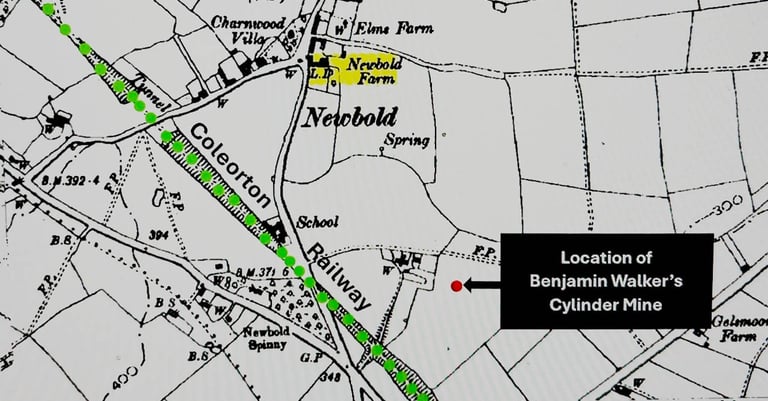

In 1830, Benjamin Walker also took out a lease on Smoile Colliery from Sir George Beaumont to expand his coal mining enterprise. Smoile Colliery operated until 1853.
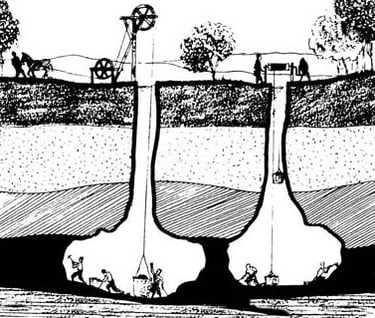

The Early Collieries
The Second Lount Colliery
Newbold Spinny together with its cottage were located on the right of Melbourne Road as you travel in the direction of Lount. It was here (marked in yellow) in 1920 that W.J. Hardy opened a small mine also called Lount Colliery. In 1923, this mine was taken over by the Leicestershire Colliery and Pipe Company Ltd.
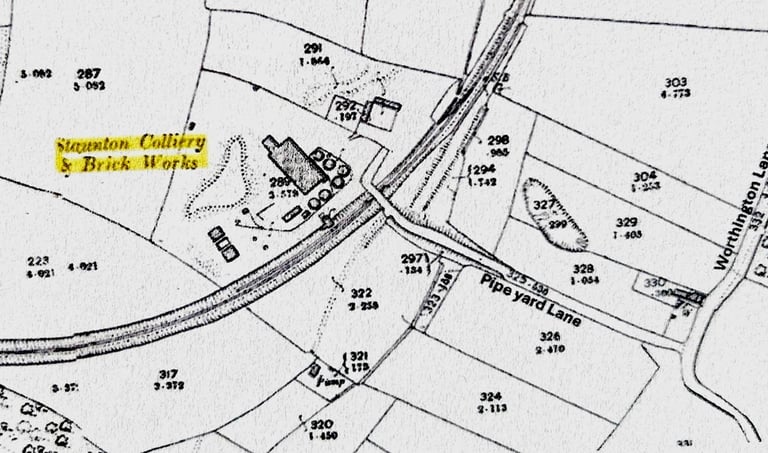

By the end of the nineteenth century, Elizabeth Lakin and other executors had sold Staunton Colliery to The Leicestershire Colliery and Pipe Company and in the early part of the 1900s the colliery changed its name to Worthington Colliery which operated until around 1910.
Interesting Fact
Worthington Colliery was also known as Newbold Glory.
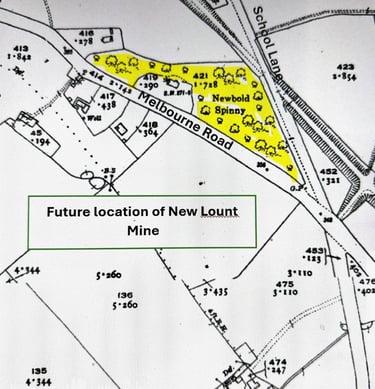

Leicestershire Colliery and Pipe Company Ltd. clearly recognised the potential of the area as they had already signed a lease in 1918 with Sir George Beaumont for the 775 acres of land opposite the Spinney. It was this piece of land that was to become New Lount Colliery, one of the most productive collieries in Leicestershire.
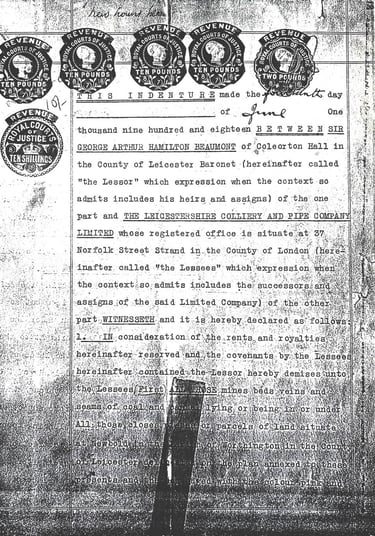

Staunton Colliery (later called Worthington Colliery)
Contrary to what its name suggests, Staunton Colliery was located close to the west of Newbold at the end of Pipe Yard Lane. It was opened by John Lakin in 1885. Old maps show the mine as Staunton Collery and Brick Works and it is believed that brick making was already taking place in Newbold from around 1800. Tragically, Lakin, two of his sons and a young boy lost their lives in a mining accident in October 1886 only a year after Staunton Colliery had opened. After his death the colliery was run by Elizabeth Lakin, John Lakin’s wife. In the late eighteen hundreds, a married woman was able to inherit property and Elizabeth continued to run the mine with James Richards as her manager.
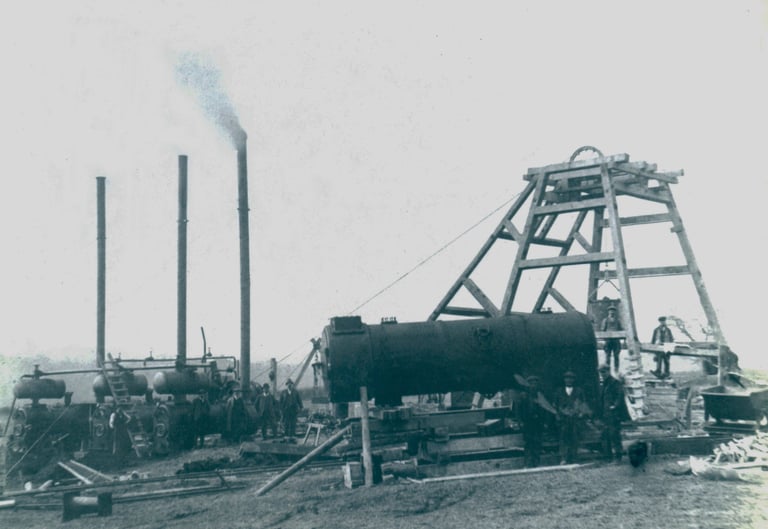

Interesting Facts
There were no ponies used underground at New Lount, as mechanised haulage systems had been installed. The colliery was very noisy and known as Newbold Clash!
Two shafts were sunk in March and May 1924, known as No 1 Downcast and No 2 Upcast. The shafts were sunk initially to a depth of 225 feet. Both shafts had a 15 ft inside diameter and were brick lined. Headings (tunnels) were driven in Middle Lount, Nether Lount and Upper Roaster Coal Seams.
Richard Hardy, the company director made an official announcement on the 21st March 1925 that coal turning had begun at New Lount and by 1926 there were 598 men employed at the colliery. In May 1929, a modern dry cleaning plant and screen had been installed to clean, separate and grade the coal. The two shafts were capable of raising 2,000 tons of coal per day.
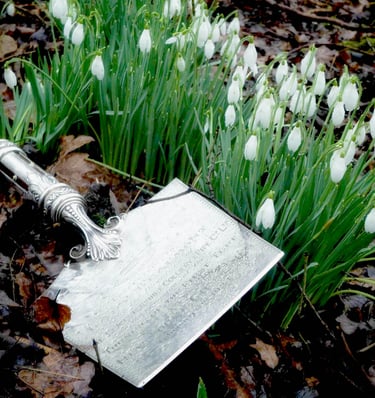

In February 1924, Sir George and Lady Beaumont presided over the official opening of New Lount Colliery and Lady Beaumont dug the first sod of earth marking shaft No 1.
Sir George and Lady Beaumont were presented with an engraved silver spade to mark the occasion.
Miners came from all around the area to work at New Lount which paid higher wages because of the very wet conditions. Many miner’s came to work by bus and others walked from villages nearby. Underground workers were employed as hewers, cutters, rippers, and loaders. Men working in the screens were paid less than the underground workers as they may have been injured miners or older miners who could no longer work underground.
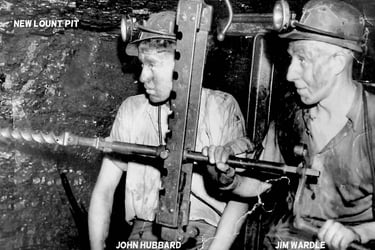

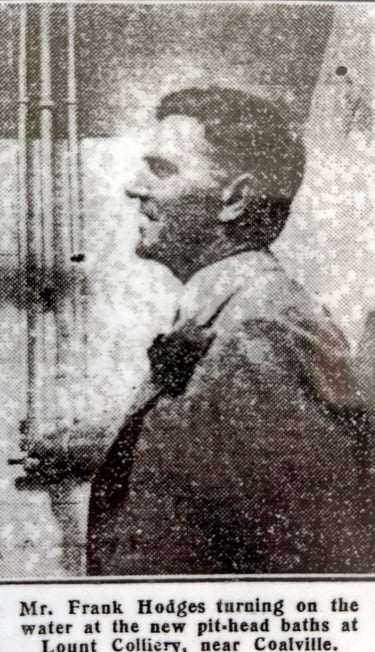

In 1930, the colliery was experiencing financial difficulties and the bank appointed Frank Hodges, a Director in the Bank of England to improve the situation. He became the Chairman of the Leicestershire Colliery and Pipe Company Ltd. and set about improving productivity. More land was leased from the Beaumont estate to expand operations.
Frank Hodges installed the Pit Baths in 1930 at a cost of £15,000. When they were first installed, the miners paid one penny a week to use the baths but they became free to use after nationalisation in 1947.
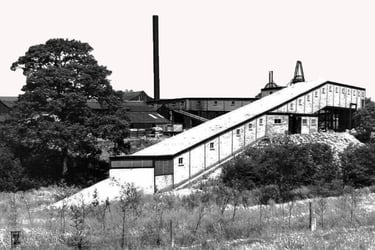

In 1933 the Leicestershire Colliery and Pipe Co. acquired the neighbouring Coleorton Colliery. This added an extra 2000 acres to the site. By 1935, the number of men had reached 1,035 with an annual output of over 356,000 tons of coal, the second largest output in the Leicestershire Coalfield. In 1936 another change of management brought even more expansion and improvement.
When war broke out in 1939, the government of the day took control of all colliery production and on the 1st January 1947 New Lount was nationalised and operated by the National Coal Board.
In 1955, a surface drift was sunk at New Lount Colliery so that all coal could be raised to the surface on a single conveyor.
More information on New Lount click here
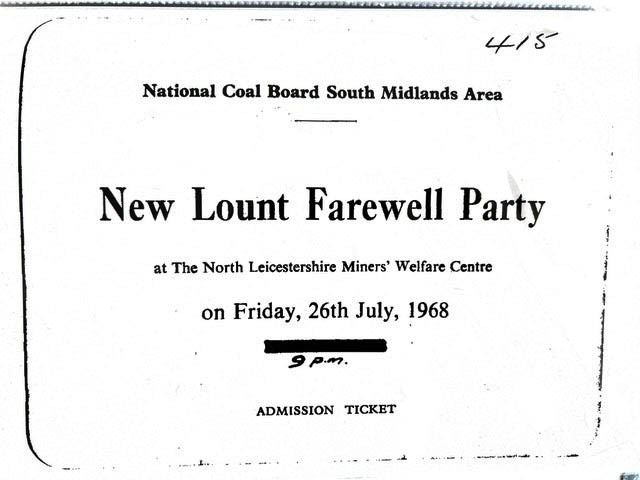

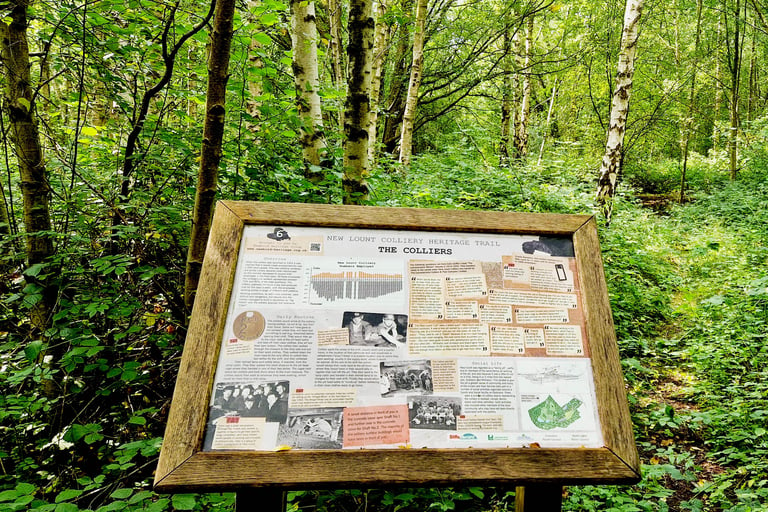

New Lount Colliery closed on the 26th July 1968 and the site was eventually turned into New Lount Nature Reserve.
Aerial view of New Lount with the slag heaps top left
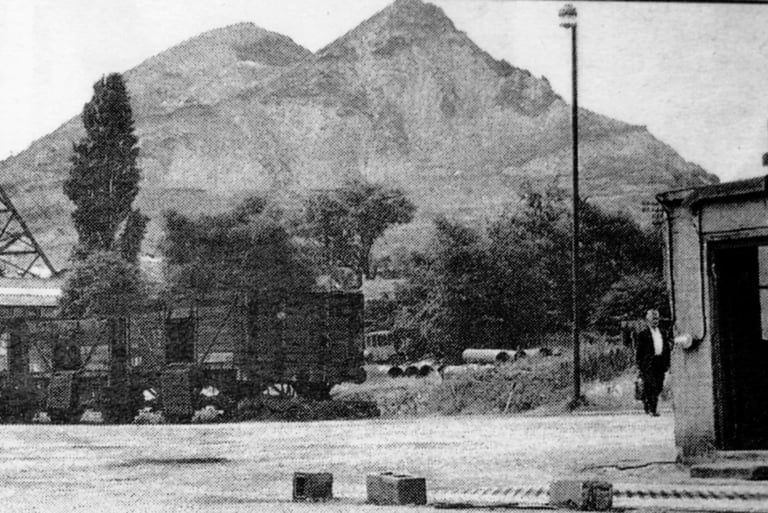

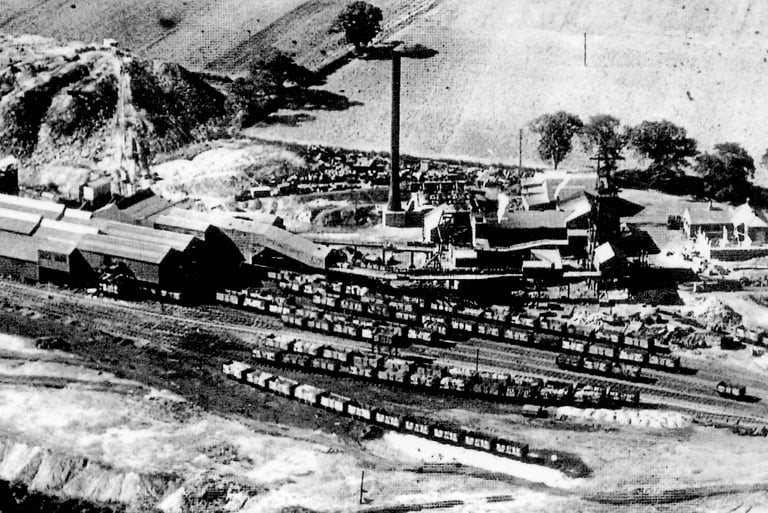

The slag heaps were locally nicknamed 'Sabrina' after a famous model from the 1950s
Newbold Coleorton Heritage Group celebrated the centenary of the opening of New Lount Colliery with a Heritage Open Day held on the 13th and 14th Sept 2024. Click here for photographs.

Converted cine film footage of the demolishion of New Lount Colliery
Health and safety people LOOK AWAY!!!
Interesting fact
When the oil distillation company ceased trading the National Coal Board cleaned out a large tank and converted it into a 'swimming pool' which was used by miners and residents of Newbold.
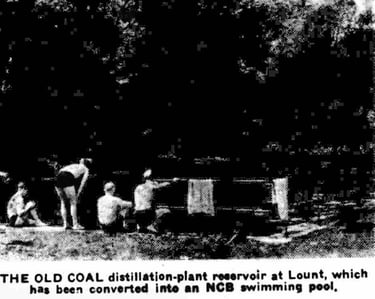

L&N Coal Distillation Ltd.
Distillation of oil from coal was attempted in the late 1920s at a pilot plant next to New Lount Colliery by L&N Coal Distillation Ltd. This company was owned by Leicestershire Colliery and Pipe Company Ltd, the owners of New Lount. Unfortunately it was uneconomical to produce oil but a smokeless fuel bi-product resulted from the process. L&N Coal Distillation Ltd turned it's attention to perfecting smokeless fuel with oil as the bi-product. A new company, British Coal Distillation Ltd was set up on the right had side of Melbourne Road heading towards Lount, before the railway bridge.
In an interview conducted with a resident of Newbold in 2016, Mr Sydney Haywood recalls going to work at the Coal Distillation Plant in 1937 when he left school aged 16. He said that at this time, the coal did not come from New Lount but from Bestwood Colliery in Nottinghamshire. The smokeless fuel was transported from the site using the New Lount Colliery railway. For more information see Samuel T Stewart's website THE OIL PLANT AT LOUNT
Image from Leicester Evening Mail, 7 June 1950




